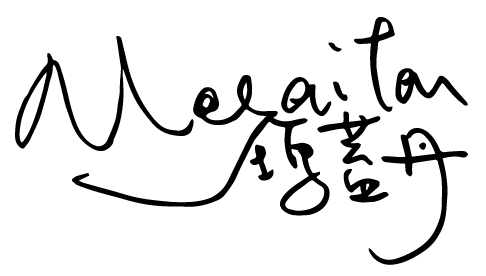Thau a kataunan lhmazawan ianan mani sa faqlhu a kushwit, maqa ianan sa manasha wa parhaway mutauniza. thuini a parhaway numa sa suma wa miniahala inai a thau a qbit sa izai a shmuzaq, mapalansuun minfazaq, numa kmathu sa faqlhu a inagqtu manakataun ; isa kataun ya mlhkakaktha, shduu mu’apaw sa faqlhu a kalawan. parhaway kinathu sa izai faqlhu a kushwit sa piaqitan kataunan shumpazaw a thau.
miazai sa kahiwan Thau a lalawa amalhituz, mulhthkiz makikalhi sa izai tanatuqash ya aminfazaq, kanuniza ya parhaway minakalangqisusayuan musha sa taun, antu aminfazaq sa ananak a lalawa numawan amutun sa ananak a lalawa. isa naak a kataunan, tata wa thau kmalawa sa LINE a qbit, itia sa parhaway a thau makatanathu makthin, muqay munsai sa izai Thau a lalawa malhinuna, miazithu parhaway ya munantua,shduu az’az shmuzaq sa Thau a lalawa. iaku ya tatata wa qali amunsai izai a qbit malhalhinuna, sa izai sa parhaway pasain sa faqlhu a kawash a aniamin, mingqtha sa sasaz minfazaq a kalawan.
parhaway tu mu’apaw, numa pu’kataunan mingqitan. kahiwan mzai dai isa kataunan muqay sa izai“tanatuqash, azazak, atu”, kataunan ya malhkaktha miarain shanasa izai tanatuqash thaithuy, numa sa parhaway a lushkin miazai amu’uka. thuini a parhaway mutautauniza, shduu mapalansuun sa izai latusha ya malhalhinuna numa malhkaktha, muqtha munsai ianan sa kushwit a parhaway kmalawa.
parhaway a kawash sa shumpazaw a kushwit, naur kazash a kalangkan sa pinsasaasin a kalapaw numa amapalhalhituz sa parhaway mani. thuini a kawash naur kazash a kalangkan mathuaw shmukus sa faqlhu a sasaasin, shiminaparhaway amariqaz, miazai sa inianan nauriza wa faqlhu a riqazan muqthawan piaqitan puil, numa tmiruq mu’apaw ya munsai sa parhaway miazaiza wa malhkaktha wa kalawan muqthawan pinutiqu, pu’parhaway isa dawaz sa saran numa Facebook shduu mara sa numa mutal smasaas.
ya kahiza, naur kazash a kalangkan (原文會) a App shduu mani apiakushwit pasain sa ma’aza numa pidazah ya amara, pashtay miaqay shduu tmiruq sa ikain ya miku mriqaz sa faqlhu a riqazan, numa shduu iamin munsai sa APP pishfazaq sa makakakri. thuini a kawash sa Alian96.3 makinturu a kawash, maqa ashiminaparhaway mriqaz, naur kazash a kalangkan ianan pu’apaw sa AR li-ziin, munsai sa Facebook shzaqan sa punuq mashiwan sa miniahala inai a thau a aniamin. faqlhu a sasaasin sa ya kahiza wa shumpazaw, numa lhmituz mani sa parhaway a farukuz, numa naur kazash a kalangkan amitamar mubuhat, numa iatunaw matiqmu sa parhaway a kawash.
What rituals mean to indigenous peoples is something more than a series of actions taking place in a ceremony. They are beliefs, indicating the indigenous peoples’ outlook on the world and life. Rituals can not only help form a connection between our people and ancestors, but also show our reverence for mountains, sea, and land.
As the number of younger people returning to villages increases, a new force starts to form. The younger generation has come into contact with other groups within society, bringing back new ideas and fresh perspectives. Innovative approaches or solutions can then be derived when discussing issues in the villages. This youthful energy is front and center since it provides indigenous villages with a fresh impetus for a better development.
An illustration of this is the passing on of indigenous languages. In the past, we learned to speak our language from our elders, but young people who left hometown did not learn to speak their mother tongue. As a result, the language gap is inevitable. People in my village created a Line group in which there are 90 young people who are required to communicate only in Thao language. This gives them an opportunity to learn their mother tongue wherever they are. I also chat with them on LINE every day. This is how young people take advantage of new technology to change traditional ways of learning indigenous languages.
With the return of young people, the demographic structure has become more complete and balanced. In the past, people said that there were only old men, children, and dogs in indigenous villages, and that only elders voiced their opinions. The voice of the middle aged and youth became silent. Now, as more young people come back, old and young generations can finally communicate and exchange their ideas together, and the young generation get to execute their own plans.
Since young people are the rising generation, the ICPF will establish a closer rapport with them. This year the ICPF spared no effort to promote a new media platform in order to draw more attention from young people. One of our efforts is to re-organize the existing news stories and select those that are most pertinent, so that they can capture on the websites, or Facebook, and share those stories.
In the future, the ICPF will work to improve our App to ensure smooth and easy access to information. People can choose the news they want to watch without any hassle, and we will promote events through the App. This year is the third anniversary of our radio channel, Alian96.3. To attract young people, we will launch ICPF’s AR filters, so people can upload indigenous symbols and accessories as their Facebook profile photo. Using new media platforms is a trend, as well as a way to bridge the gap between the young generation and our application. The ICPF will continue the work and embrace new generations.
tuali mingkalangkan faat a thau Miniahala inai a thau a qbit sa
kazakazash a kalawan naur ansuunin sa tuali makarishkish wa Thau
CEO of the Indigenous Peoples Cultural Foundation





